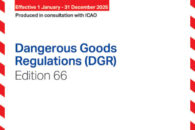
On January 1, 2020, a new regulation goes into effect that will impact every organization that manufactures or distributes lithium batteries and/or the equipment they power. These companies will be required to share information, known as a “test summary,” that proves their batteries meet the testing standards as defined in sub-section 38.3 of the UN Manual of Tests and Criteria.
Most of those organizations are ready for the new rule. But some are still scrambling to gather the required information and decide how they’ll maintain and deliver it. That can be stressful.
“There’s no real need to panic,” says Labelmaster Senior Manager Jim Shimko. “With any new rule, especially one this significant, there can be growing pains, but essentially it’s just a newly defined way to present information for something you should be compliant with already.”
Here’s what you need to know about the new lithium battery test summary rules, along with five reasons not to stress out about them.
Complete text of the 38.3.5 lithium battery test summary rule
Here’s the complete text of the rule as quoted in IATA’s updated 2019 Lithium Battery Guidance Document (the bolding is ours):
Effective 1 January 2020, manufacturers and subsequent distributors of cells or batteries and equipment powered by cells and batteries manufactured after 30 June 2003 must make available the test summary as specified in the UN Manual of Tests and Criteria, Revision and amend. 1, Part III, sub-section 38.3, paragraph 38.3.5.
Note:
The requirement is for the manufacturer and subsequent distributors to make this test summary available. There are numerous ways this can be achieved, such as by listing the applicable summary document on the company website. There is no expectation for the shipper/distributor to provide paper copies with each consignment containing lithium batteries. The supply chain are encouraged to make use of technology to facilitate the availability of the test summary.
And here’s the complete list of the information that—at a minimum—must be provided in the test summary:
-
- Name of cell, battery, or product manufacturer, as applicable;
- Cell, battery, or product manufacturer’s contact information to include address, phone number, email address and website for more information;
- Name of the test laboratory to include address, phone number, email address and website for more information;
- A unique test report identification number;
- Date of test report;
- Description of cell or battery to include at a minimum:
- Lithium ion or lithium metal cell or battery;
- Mass;
- Watt-hour rating or lithium content;
- Physical description of the cell/battery; and
- Model numbers.
- List of tests conducted and results (i.e., pass/fail);
- Reference to assembled battery testing requirements, if applicable (i.e., 38.3.3 (f) and 38.3.3 (g));
- Reference to the revised edition of the Manual of Tests and Criteria used and to amendments thereto, if any; and
- Signature with name and title of signatory as an indication of the validity of information provided.
5 reasons why 38.3.5 is nothing to stress out about
Shimko gives five reasons most manufacturers and distributors should be able to comply with the new rule without enduring elevated stress levels:
- This is not completely new. “There’s no new test you have to go through,” says Shimko. For years, manufacturers and distributors have been required to prove their batteries meet the UN 38.3 test standards. “What’s new is just how you present that information. There’s now a list of specific information you must provide.”
- There is no specified form to complete. Shimko says, “Anything that covers all the necessary data is fine. It can be a simple document available on your website, and all you have to do is share a link.”
- You do not need to include new documentation with your shipments. Contrary to what many people fear, the rule does not specify that you must provide a copy of this test summary with each shipment. You just need to be able to make the data available if requested.
- The information can be easy to find. Distributors or equipment manufacturers may find that the test data they need is readily available. Shimko points out, “Battery and product manufacturers create a product data sheet or a product information sheet today that’s similar. The new test summary may be available in the same location as before.”
- The rule is not in force everywhere yet. “Not all countries have adopted it yet,” says Shimko. “Harmonization with the rule is still a proposed rulemaking in the U.S., but there’s no final rule yet. Same in Canada and Mexico. It has been finalized by modal regulatory bodies such as ICAO, IMO and others, so it’s only a compliance requirement if you’re shipping in accordance with these regulations. ”
“You might have to scramble.”
If lithium battery test summaries are nothing to stress out about, why are some people stressing out anyway?
“The further down the chain you are, the more you might have to wait on others up the chain to have their data ready,” says Shimko. “If you’re a distributor offering 1,000 products with batteries, you might be waiting on data from a lot of different manufacturers. And if you’re just starting to prepare now, you might have to scramble. You have a lot of work to do.”
He points out that the rule was adopted by the modal regulatory agencies some time ago. But there’s still time to collect the test data you need to comply. “Start with the battery or equipment manufacturer’s or seller’s website. And you may not even have to go all the way back to the people who built the battery.”
So don’t stress out—you got this! And if you need some stress relief, give us a call. We can help.
Questions about complying with the new lithium battery test summary rules? Email Jim Shimko or call Labelmaster at 800.621.5808 and ask to speak to a member of the Regs Team.
Make sure your shipments are safe and in complete compliance with a full line of solutions from Labelmaster—a full-service provider of goods and services for hazardous materials and Dangerous Goods professionals, shippers, transport operators and EH&S providers.



Thank you for good information I have learned about hazards of lithium batteries and the test summary required to be safe use .
Very nice article on Battery testing labs I had some doubt about insulator testing, but now I’m clear on it. Thank you.